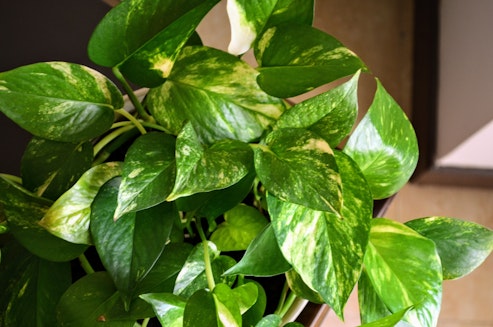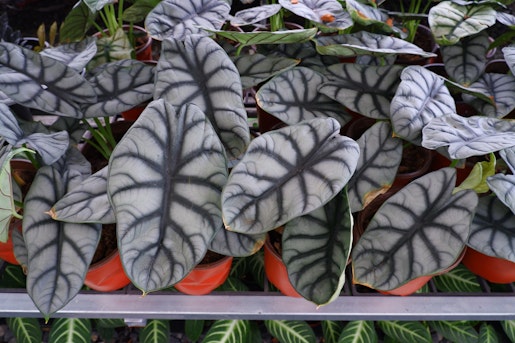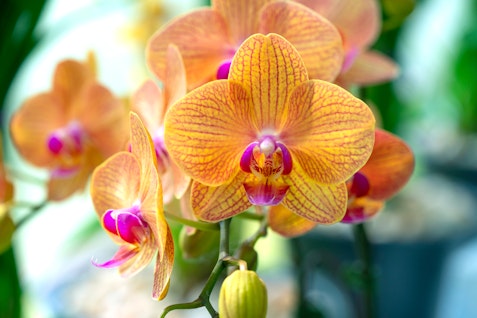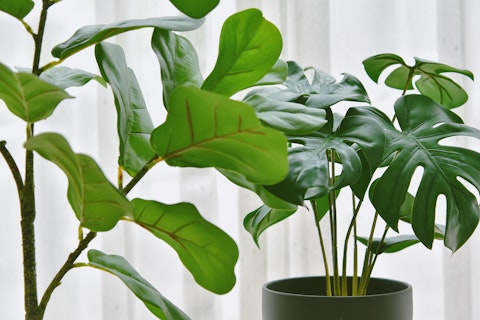
- Home
- Botanical Glossary

Angiosperm: A term defining plants that reproduce by producing flowers and then seeds enclosed within a case or ovary called a carpel (e.g.: fruit, vegetables, seed pods)
Anthocyanins: The blue, red, or purple pigments found in plants, especially flowers, fruits, and tubers.
Bryophytes: A term defining plants that do not have a vascular system and cannot transport water within themselves (e.g. Mosses, Liverworts).
Chlorophyll: A green pigment present in the cells of plants that allow for the absorption and utilisation of sunlight as energy.
Clade: A denomination for a group of organisms that all share a common ancestor. Used as a modern alternative to the classic Taxonomic system and takes a more objective, scientific approach.
Class: The fourth subdivision in Carl Linnaeus’ traditional taxonomic system.
Common Name: A commonly used term to describe an organism that is at least partially separate from its taxonomic terminology (e.g. ‘cat’, ‘mother-in-law’s tongue’, ‘jade plant’)
Convergent Evolution: Evolutionary traits that arose in two or more organisms that are shared by coincidence, not by ancestry.
Cultivar: A non-genetic subdivision of plant, usually selectively bred, named by the grower. Usually a plant of alternate colours/shapes/sizes to the traditional specimen.
Cyathium: A specialised pseudanthium or false flowers which forms the inflorescence of plants in the Euphorbiaceae family. The inflorescence consists of several naked staminate flowers accompanied by usually one naked pistillate flower and subtended and mostly enclosed by a cup-shaped involucre. Plural is Cyathia.
Dicotyledon: A plant that has two embryonic seeds (cotyledons).
Domain: The first category in the taxonomic hierarchy. Split into three groups: Eukaryota (see below), Archaea (Single celled organisms with a cell wall composed of sugars) and Bacteria (Single celled organisms with a cell wall composed of proteins and sugars).
Ethnobotany: The study of the relationship between people & plants.
Etiolation: Plant growth that is pale, leggy and has largely spaced out leaves due to a lack of adequate light.
Eudicot: abbr. Eudicotyledons. Plants that germinate with more than one embryonic leaf (Cotyledon). They are easily identified: Firstly, their leaves have one or more major veins, with sub-veins protruding from them. Secondly, as they mature their stem gets sturdy and woody. Thirdly, their flowers typically present with 2, 4 or 5 or in multiples of 4 or 5 petals (e.g.: Monstera, Cacti, Roses).
Eukaryota: A domain of organisms that have cells with a membrane-bound nucleus. This domain includes all animals, plants, fungi, slime moulds and protists (e.g. amoebas and diatoms).
Family: The sixth subdivision in Carl Linnaeus’ traditional taxonomic system.
Fenestrating: (from verb: Fenestrate). Having small perforations or transparent areas. (e.g.: Monstera deliciosa, Rhaphidophora tetrasperma).
Genealogy: A line of descent traced continuously from an ancestor.
Genera: Plural form of genus (see below).
Genus: The seventh subdivision in Carl Linnaeus’ traditional taxonomic system. The first of two words used to represent a species in taxonomic classification (e.g. Crassula ovata).
Gymnosperm: A term defining plants that produce unprotected seeds (e.g. pinecones, junipers, cycads)
Kingdom: The second subdivision in Carl Linnaeus’ traditional taxonomic system. For the Eukaryotes, these are divided into: Plantae, Animalia, Fungi and Protista.
Monocot: abbr. Monocotyledons. Plants that germinate with one embryonic leaf (Cotyledon). They are easily identified: Firstly, their leaves have multiple parallel major veins. Further, their flowers typically present with petals in multiples of 3 (e.g. grasses, orchids, daffodils).
Node: The part of a stem from which a leaf, whether complete or incomplete, emerges. This is sometimes noticable as a bump or slight swelling.
Nomenclature: The devising or choosing of names for things, especially in science.
Order: The fifth subdivision in Carl Linnaeus’ traditional taxonomic system.
Petiole: The stalk that joins the leafblade (the flat part of the leaf, also called a lamina) to the stem.
Photoreceptor: Cells that respond to light.
Photosynthesis: The process that plants use to turn light, carbon dioxide, and water into sugars that fuel plant growth, using the primary photosynthetic enzyme Rubisco.
Phototropism: Plants that grow dramatically in the direction of a light source, usually as a result of inadequate sunlight.
Phylogenetic: A term relating to the evolutionary development and diversification of a species or group of organisms.
Phylum: The third subdivision in Carl Linnaeus’ traditional taxonomic system.
Plantae: The Kingdom of Eukaryotic organisms that are predominantly photosynthetic (plants).
Propagation: The act of reproducing or breeding a living thing by means of natural processes using the parent stock.
Prototypical: A term defining un-scientific words that are used to generalise or demonstrate all members of a group of alike things (e.g.: tree, cat, succulents)
Pteridophytes: Plants that reproduce by producing spores (e.g.: ferns, club mosses, horsetails)
Pups: An offset, a small daughter plant that is produced asexually from the mother plant.
Reclassification: The action of changing the Taxonomic classification of an organism.
Rhizome: A modified slender, horizontal, subterranean, rootlike stem that sends out roots and shoots from its nodes.
Species: The eighth subdivision in Carl Linnaeus’ traditional taxonomic system. The latter of two words used to represent a species in taxonomic classification (e.g. Crassula ovata).
Stomata: A microscopic opening upon the surface of a leaf that is imperative in gaseous exchange and photosynthesis.
Subspecies: A ninth subdivision in Carl Linnaeus’ traditional taxonomic system. There can be multiple subspecies within a subspecies. Often a species isolated to one geographic location.
Taxonomic Classification: A system of categorising or ordering organisms by means of both phylogenetic relationships and historically: observable similarities.
Thallophytes: Plants that consist of a thallus, which is a body that is not differentiated into separate organs like stems, roots, leaves or any vascular system (e.g.: algae, lichens)
Tracheophytes: Plants with a vascular system of Xylem and Phloem that can transport water around their body.
Jonathan Davies
Jonny has worked at Root since May 2023. His love for plants was inherited initially from his grandparents and parents, but really took off once he moved into his own place, where he started picking up small plants and was fascinated by watching how they grow and change over time. Jonny has a degree in Archaeology and Classics from the University of Sheffield, and a masters in Egyptology from Swansea University, where he primarily focused on garden culture in the ancient world, which he has managed to extend to a PhD thesis in the University of Liverpool, where he has been able to combine his love for plants with his love for ancient language and culture. Jonny loves being in the natural spaces around North Wales and Cheshire where he used to go growing up, and often spends hours examining the plants and trees, and kicking up the leaf litter searching for mushrooms and insects. He is fascinated most by plant biology, taxonomy and learning about ecosystems and interactions between plants and their environmental counterparts, and enjoys tending to his varied array of houseplants, and ongoing ‘plant projects’, such as growing plants from seeds and creating living epiphyte displays. Aside from his green thumb, his other interests include: art, reading, listening to and playing music in the company of his cats, Spooky and Boo.
More by Jonathan DaviesRelated Articles
View all articles




